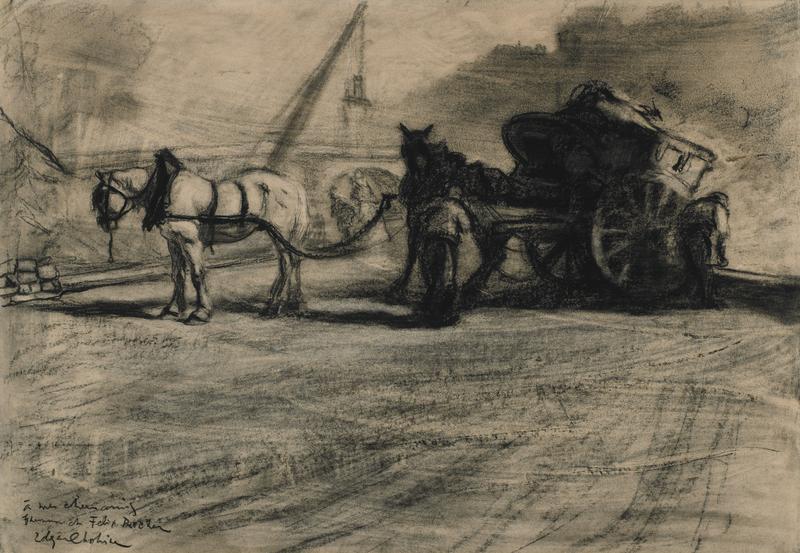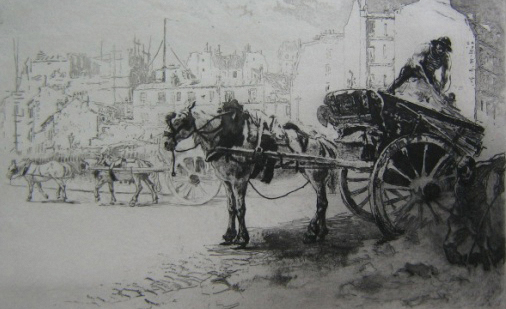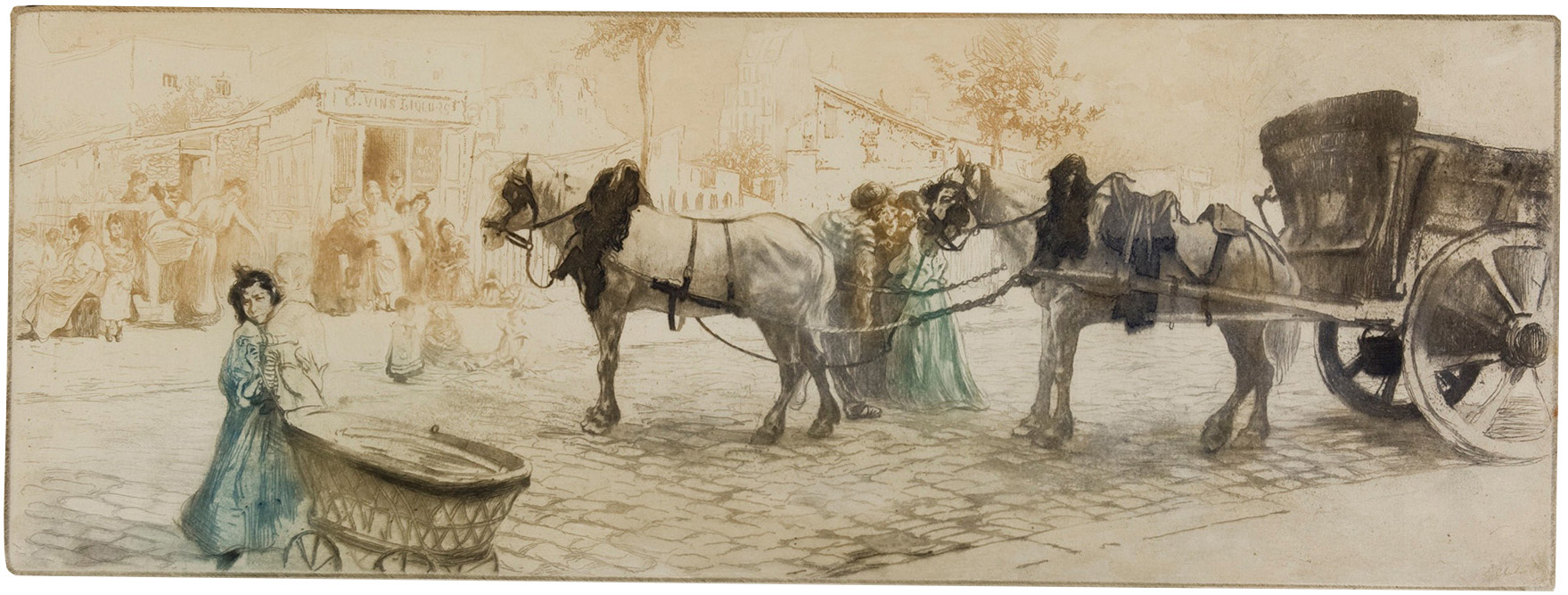
50. Edgar Chahine, Street Builders
| Artist | Edgar Chahine, French (born Austria), Vienna 1874–Paris 1947 |
| Title, Date | Street Builders (Les terrassiers), c. 1902–4 |
| Medium | Charcoal on cream paper |
| Dimensions | 13 5/16 × 19 3/8 in. (33.8 × 49.2 cm) |
| Inscriptions + Marks | Lower left: à mes chers amis / [illegible] et Félix Rocher / Edgar Chahine |
| Provenance | Estate of the artist; Pierre Chahine (son of the artist), until 1982; to Weisberg; Yvonne and Gabriel Weisberg, Minneapolis |
| Exhibition History | "The Quieter Image: 19th Century European Drawings and Watercolors," Carleton Art Gallery, Carleton College, Northfield, Minn., 1996, no. 22; "Expanding the Boundaries: Selected Drawings from the Yvonne and Gabriel P. Weisberg Collection," Mia (2008) and Snite Museum of Art, Notre Dame, Ind. (2010); "Reflections on Reality: Drawings and Paintings from the Weisberg Collection," Mia, 2022–23 |
| References | Lisa Dickinson Michaux with Gabriel P. Weisberg, "Expanding the Boundaries: Selected Drawings from the Yvonne and Gabriel P. Weisberg Collection" (exh. cat.), Minneapolis Institute of Arts (Minneapolis, 2008), p. 50, fig. 30 |
| Credit Line | Promised gift of Gabriel P. and Yvonne M.L. Weisberg, Minneapolis |
The indefatigable Edgar Chahine might have had a brush in hand one day, an etching needle the next. He worked in charcoal, pastel, oil, and etching, but his subject was invariably the same: Parisian life. After spending his childhood in Constantinople (now Istanbul) and his student years in Venice, Chahine arrived in Paris at age twenty-one. There he seems to have been continually amazed by what he saw. The world he captured ranges from filth to finery: beggars, ragpickers, prostitutes, market scenes, workers on the Seine, street wrestlers, cabarets, cafés, women in their carriages, prominent citizens—a veritable encyclopedia of Parisian life.

This charcoal is a preliminary drawing for a Chahine print, Street Diggers (fig. 1), reproduced in L’Art Décoratif in 1905. The artist made many changes between this study and the final image. The drawing appears direct and unfiltered, a record of a scene as Chahine witnessed it. The final etching shows the artist modifying and softening the realist bent of his study, perhaps so that his print would be more salable. While the background in the drawing is left vague, Chahine gave the print considerably more detail. He also reduced the foreground expanse to bring the main horse and cart into closer view, and gave the two workers more active roles. A similar cart with both horses appears in an earlier etching as well (fig. 2).1

It is rare to find a preparatory study for a Chahine print, but it is highly likely that many more existed. Unfortunately, a 1926 fire and a 1942 flood devastated the contents of his studios.
GPW
Notes
See M. R. Tabanelli, Edgar Chahine: Catalogue de l’oeuvre gravé (Milan: Il Mercante di Stampe, 1977), for both prints: Street Diggers, no. 141, and A Side Street in the Grandes Carridres Quarter, no. 76. ↩︎